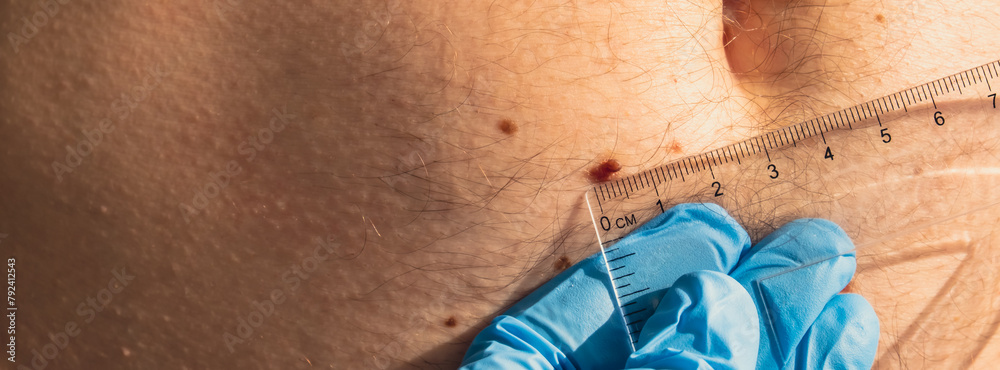- Home
- OUR TEAM
- Medical
- Cosmetic
- Surgical
- Photos
- RESOURCES
- Our Product Line
- Contact Us

Home » Medical » SKIN CANCER » Squamous Cell Carcinoma
More than 1.5 million Americans are diagnosed each year with squamous cell carcinoma. At New Jersey’s Skin & Laser Center of NJ, we focus not just on diagnosis and treatment, but on educating patients about the disease, which is the second most common form of skin cancer. As indicated by the name, this type of cancer starts in the squamous cells, which make up the middle and outer layers of the skin. With early detection and treatment, squamous cell carcinoma is usually highly treatable. Left untreated, it can spread to other parts of the body, causing more serious complications.
The providers at Skin & Laser Center of NJ understand that cancer is a scary word, but that empathetic, professional care can make all the difference. We work with you to develop a treatment plan to address all squamous cell carcinoma growths, and to educate you about skin cancer so you can take steps to minimize your risk of developing additional cancerous growths. Because the most common cause of squamous cell carcinoma is excessive exposure to ultraviolet radiation, New Jersey patients may be advised to avoid direct sun exposure and tanning beds.


In late 2016 she founded the Skin & Laser Center of NJ, LLC in Mahwah, NJ where she continues to treat her medical and cosmetic patients, and further pursues her interest in laser medicine. Dr. Lieb’s mission is to provide high quality dermatologic care using up-to-date medical information and cutting edge technology in an efficiently run practice. Dr. Lieb is board certified in dermatology, is a Fellow of the American Academy of Dermatology, a member of the American Society of Dermatologic Surgery, the American Society of Laser Medicine and Surgery, and the New Jersey Dermatologic Society. Dr. Lieb is a Staff Dermatologist at The Valley Hospital in Ridgewood.
Squamous cell carcinoma is most likely to develop in areas of the skin that are most commonly exposed to the sun, including the scalp, the backs of the hands, the ears, and the face. This does not mean that it can’t also be found elsewhere, so it’s important to examine your entire body when performing routine skin cancer self-examinations.
Squamous cell carcinoma can present in a variety of ways, but these are some of the most common signs:
If you encounter any skin irregularities while performing a skin cancer self-examination, and are concerned about possible squamous cell carcinoma or other cancers, contact our experienced providers at Skin & Laser Center of NJ for a formal diagnosis and treatment.
A squamous cell carcinoma diagnosis typically comes after one of our well-trained providers has examined the area and performed a skin biopsy. Following this diagnosis, the first and primary goal of treatment is to remove the cancerous cells before they have an opportunity to spread. Removing a squamous cell carcinoma is usually a minor procedure with a very high success rate.
Depending on the location and size of the squamous cell carcinoma growth, there are several methods that may be used to remove the tumor:
While there are many effective treatment methods available at Skin & Laser Center of NJ, prevention is always the better option. There are steps everyone can take to help reduce the risk of developing skin cancer, including squamous cell carcinoma, basal cell carcinoma, and melanoma. These measures include:
Patients interested in learning more about proactive preventive procedures including photodynamic therapy and topical chemotherapy can schedule an appointment with our care providers.
In addition to squamous cell carcinoma, our Skin & Laser Center of NJ providers also offer care for patients with basal cell carcinoma and melanoma, as well as other medical dermatology conditions, such as rosacea, eczema, psoriasis, and acne.
Skin & Laser Center of NJ in Ramsey provides a wide range of medical, surgical, and cosmetic services for patients in and around New Jersey. Patients can get diagnosis and treatment for acne, skin cancer (with Mohs surgery), chronic conditions (like psoriasis, rosacea, and eczema), moles, melasma, vitiligo, athlete’s foot, toenail fungus, scabies, contact dermatitis, and more. Cosmetic options include wrinkle-relaxing BOTOX® and Dysport®, dermal fillers like Juvederm® and Restylane®, Kybella® for reducing a double chin, chemical peels, Hydrafacial MD, microneedling, laser hair removal, laser acne treatments, laser scar treatments, laser tattoo removal, CoolSculpting®, laser vein treatments, sclerotherapy, and more.
© 2025 Skin and Laser Center of NJ.
Medical Marketing & Website Design by MetaMed